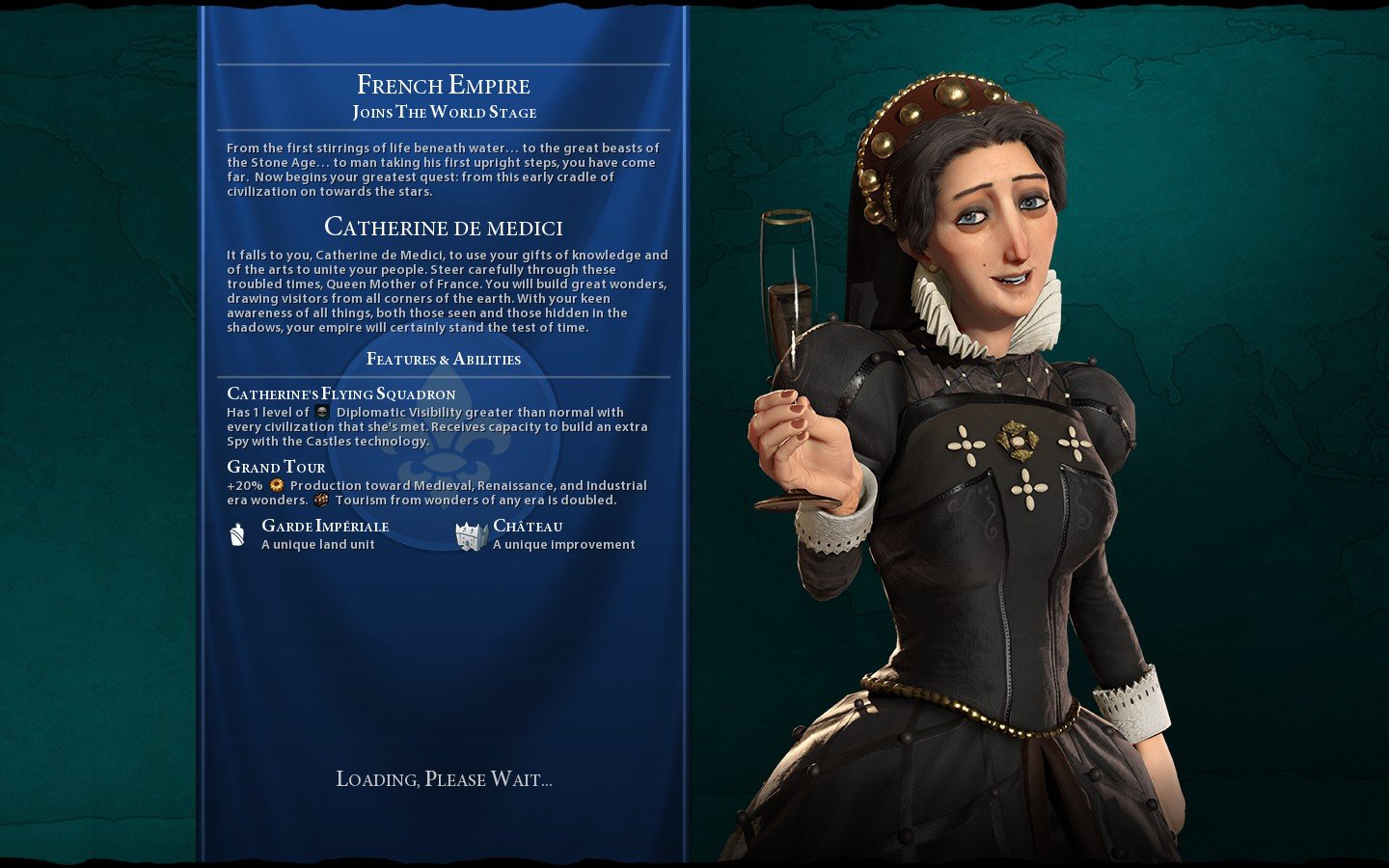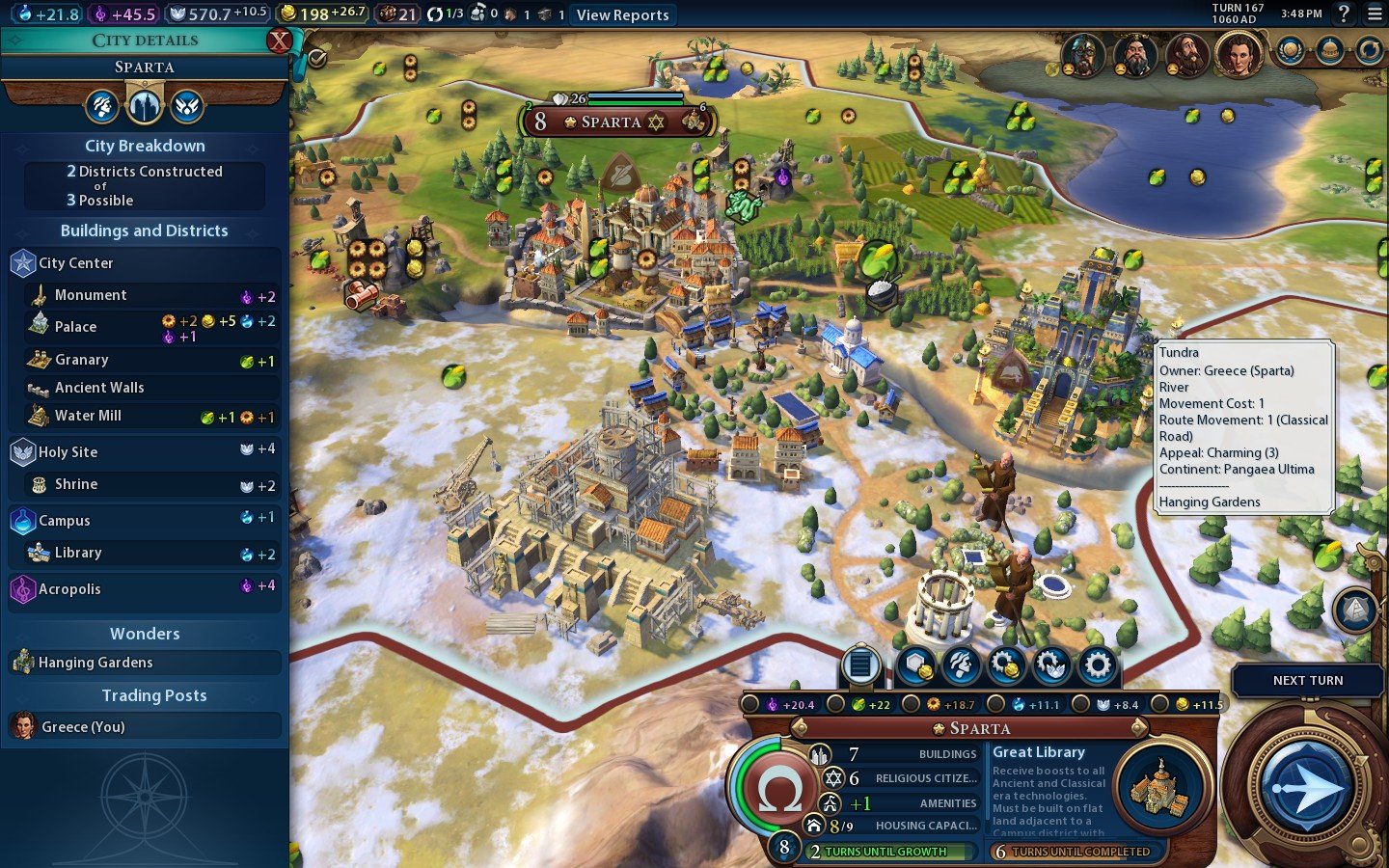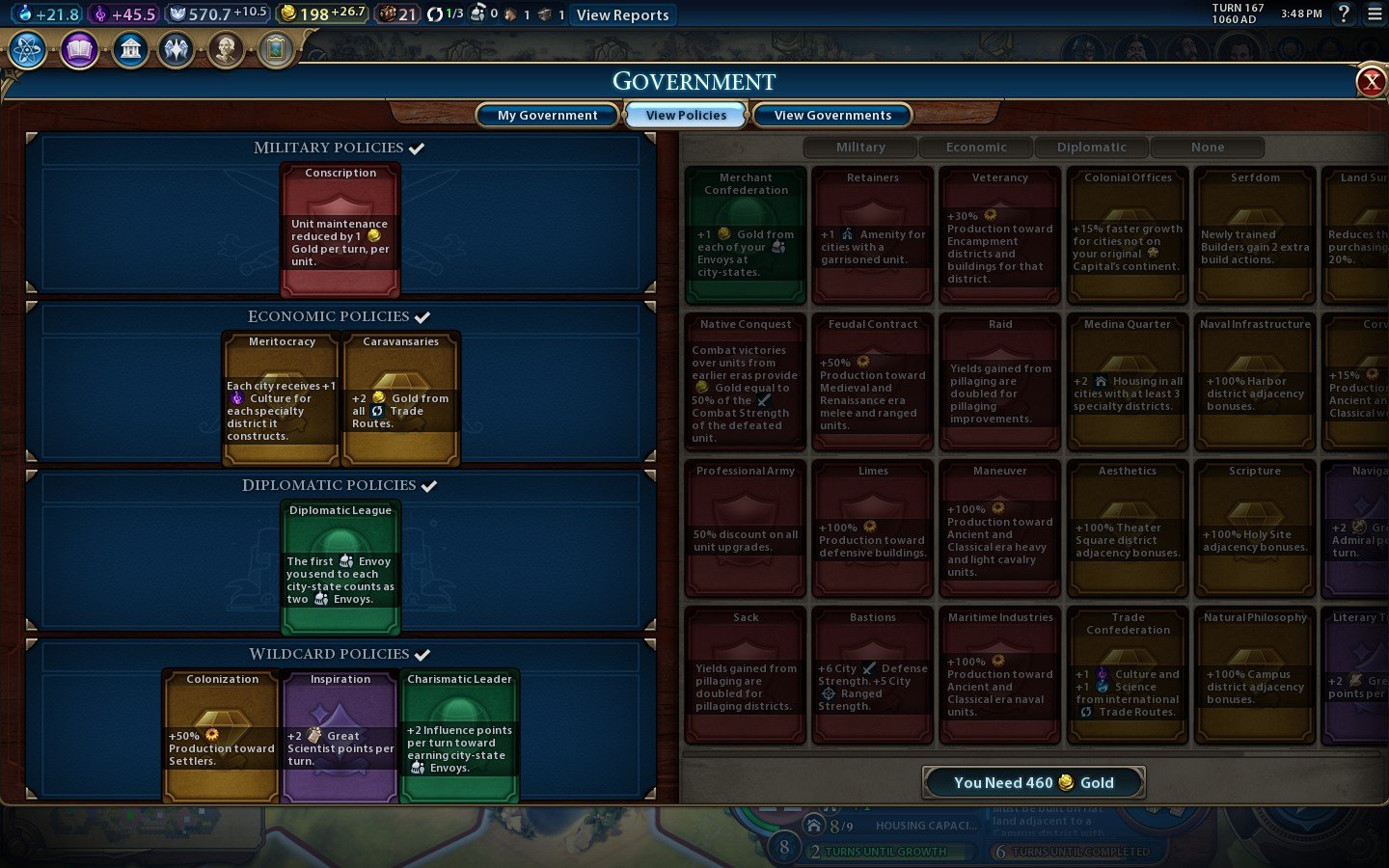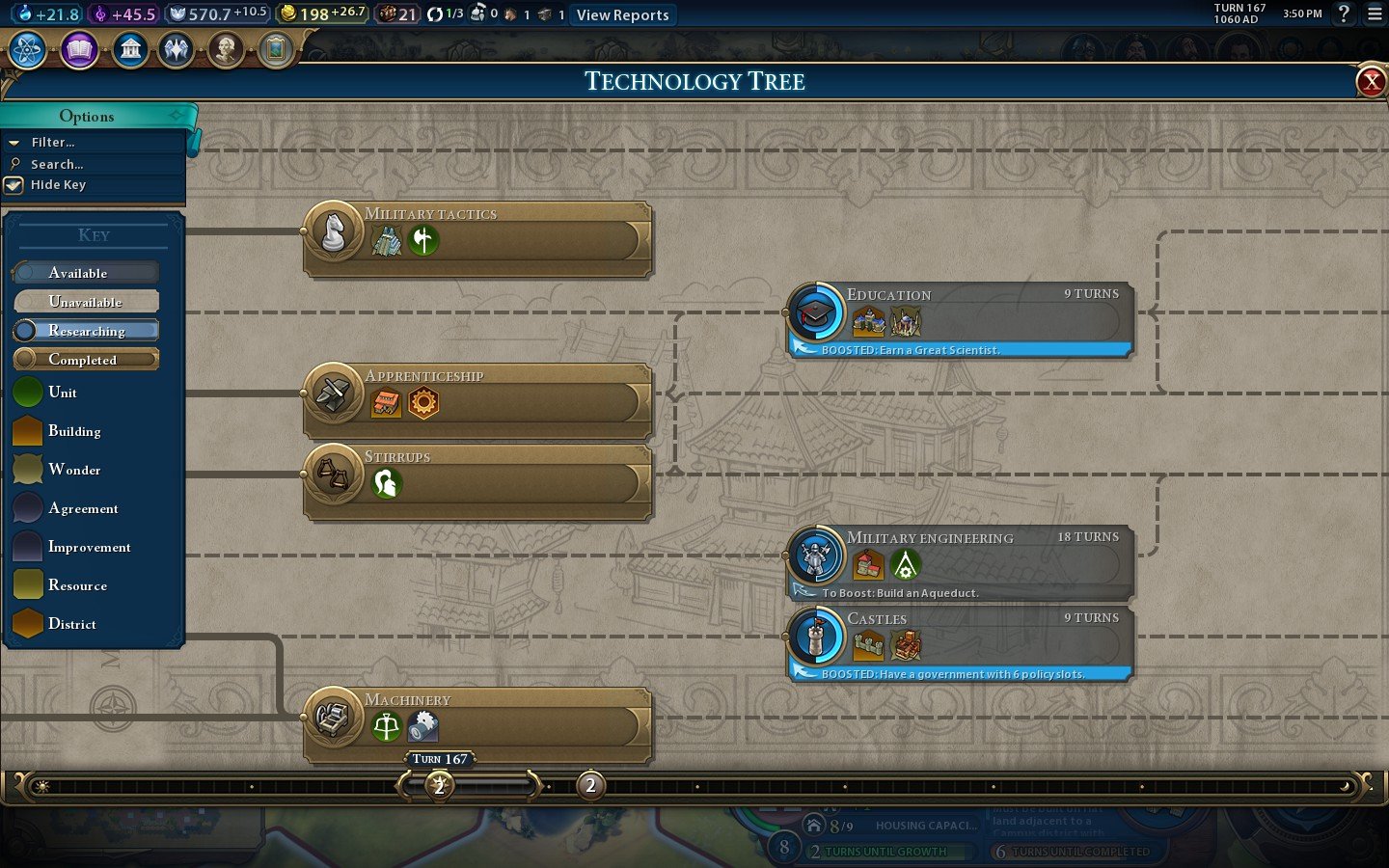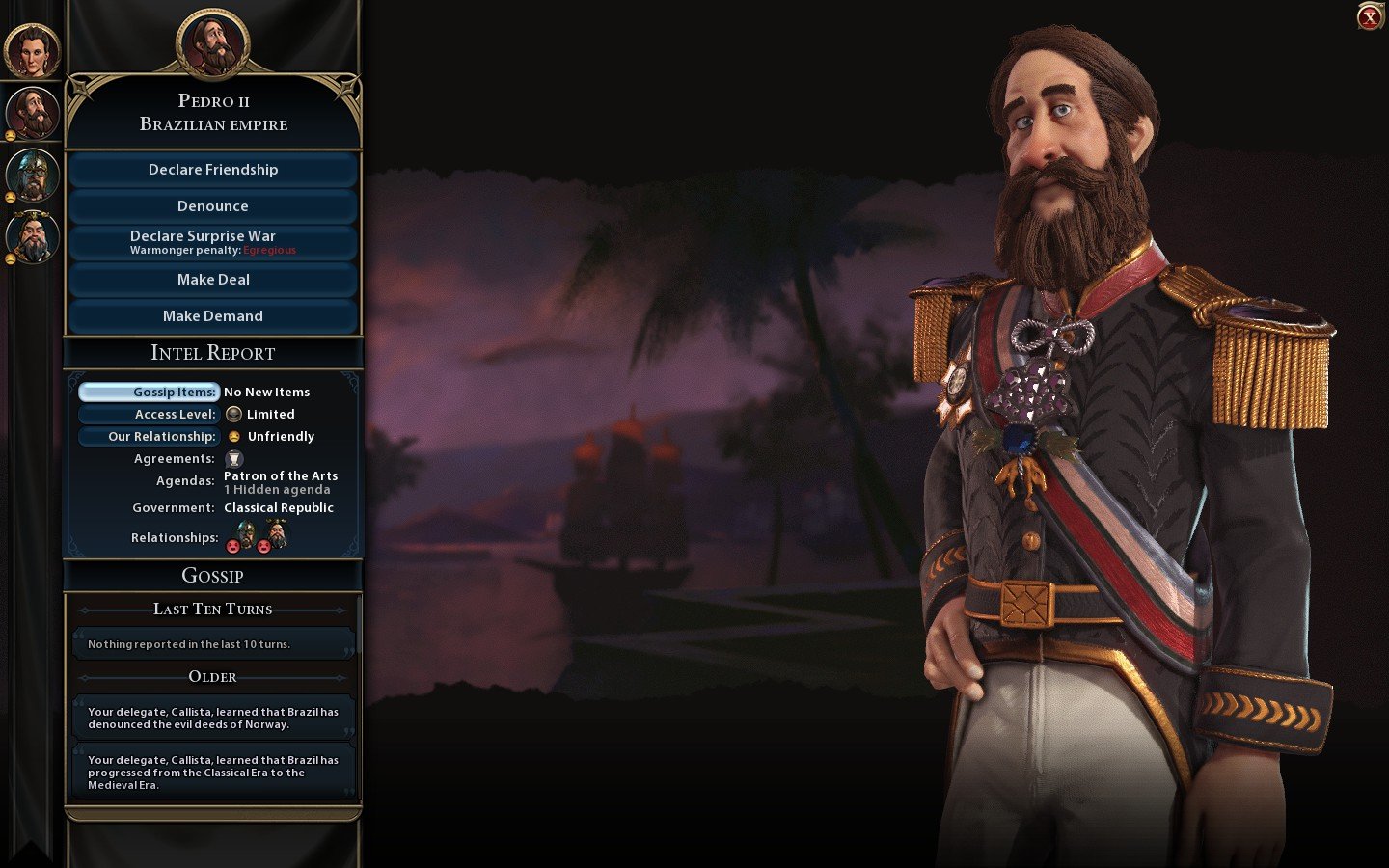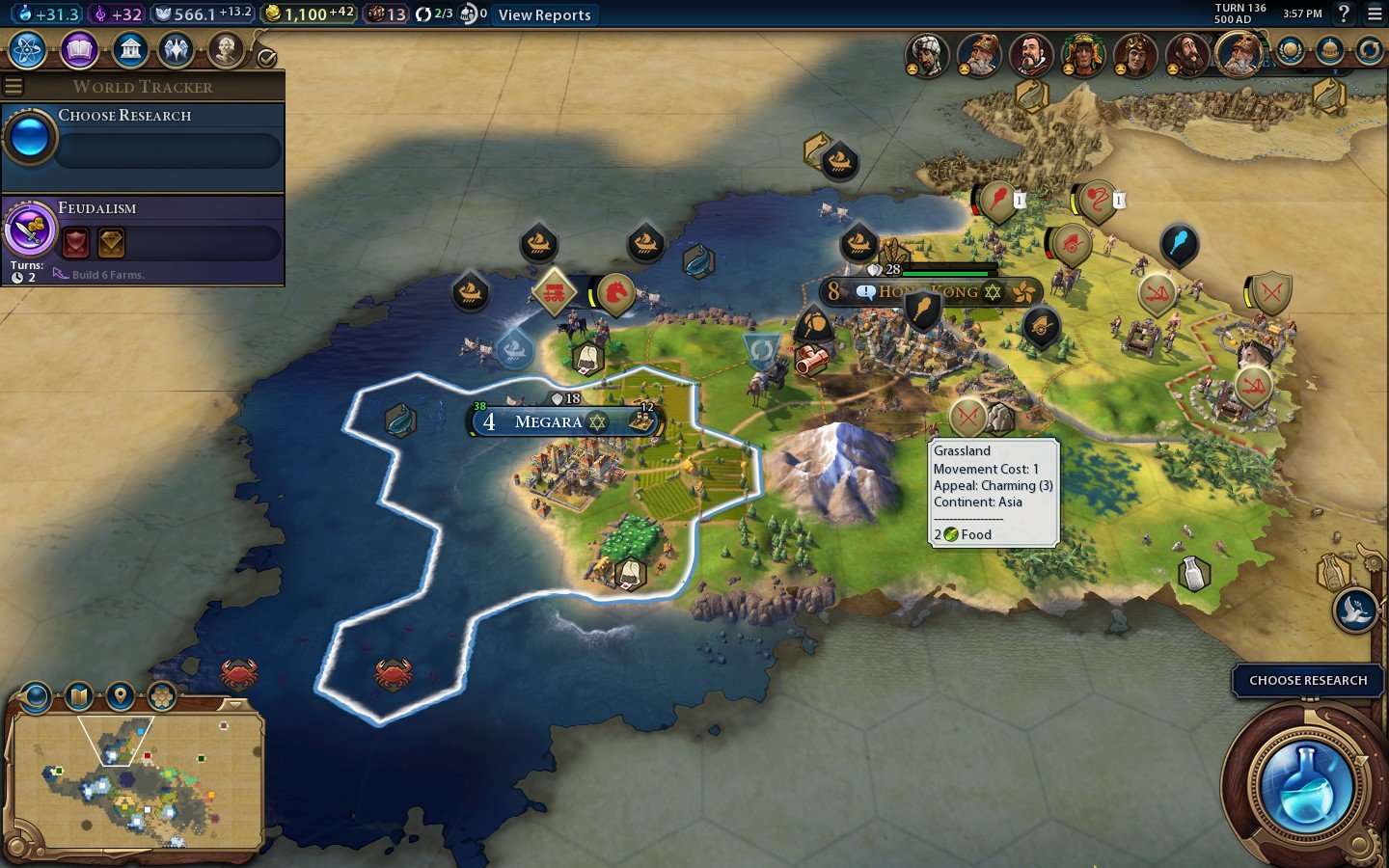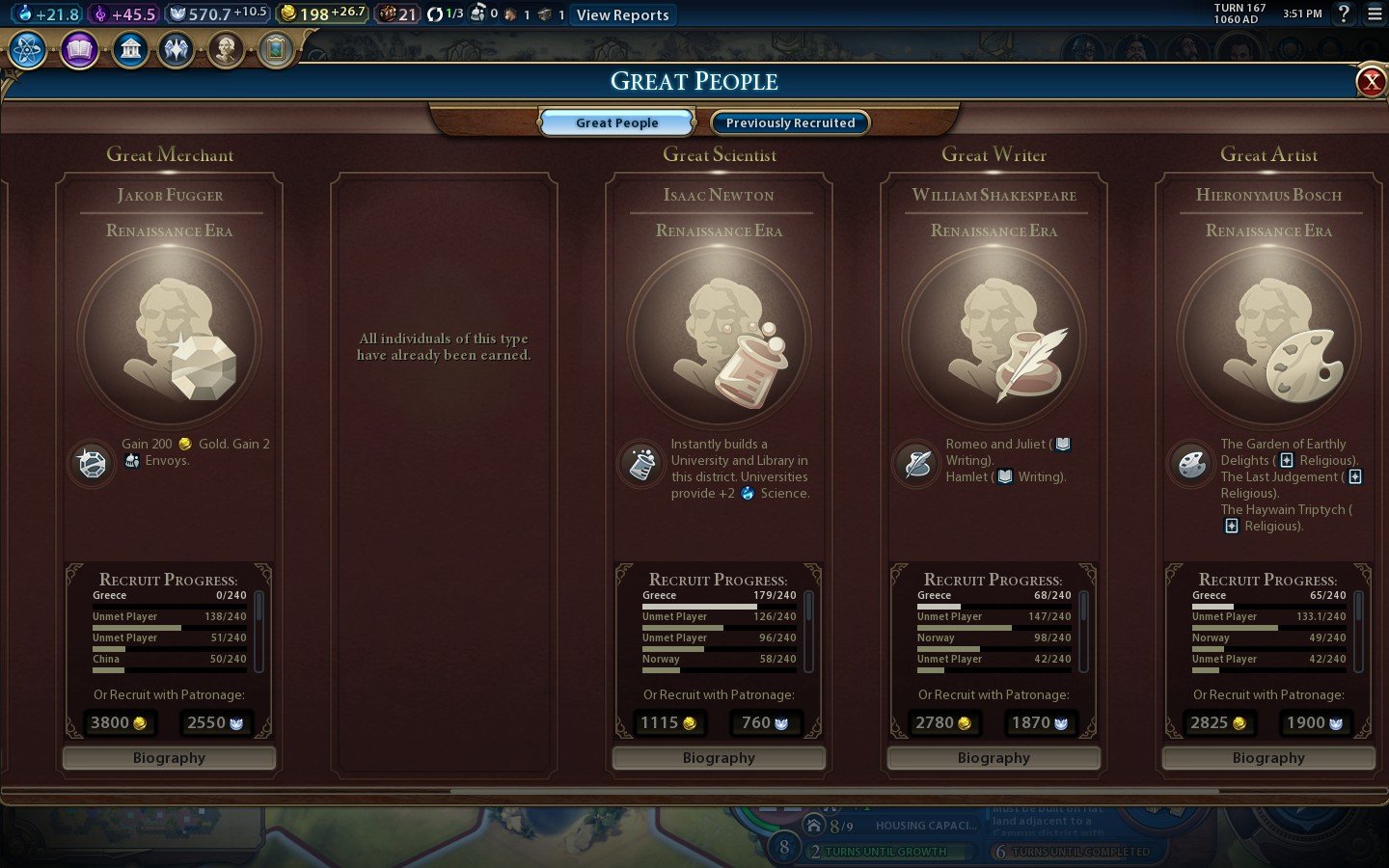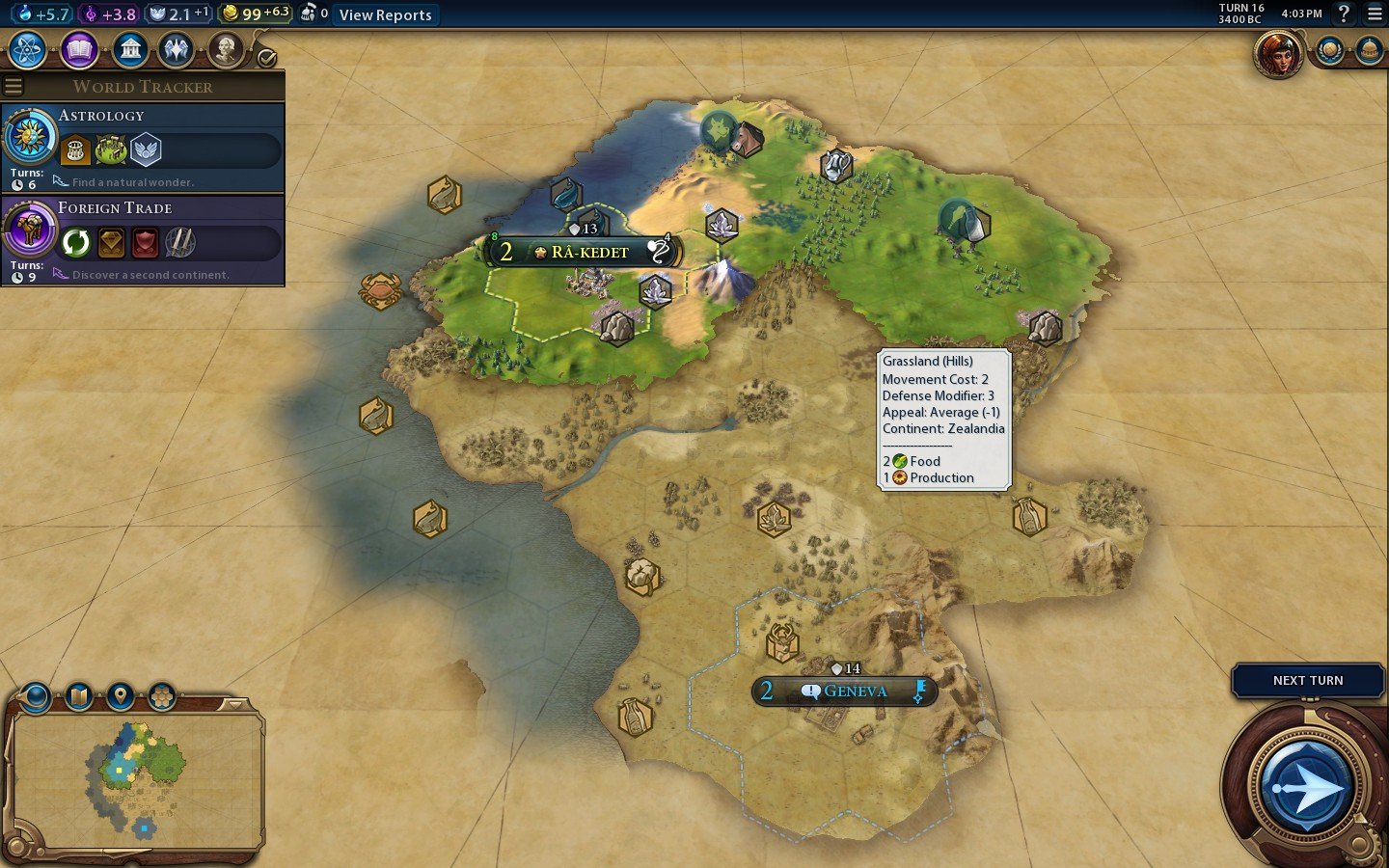Civilization 6 review on Windows 10: It's time to take over the world

The world is sheathed in grey past your capital city. Nearby you can spy copper, Gypsum, and rice. Around you are rivers that cut close to the capital city of Sparta, tundra to the south, and a desert that stretches into the darkness around you. It's impossible to say right now what, or who you will find in the fog of war that surrounds you. You'll need to juggle food, production, science, culture, and religion to bring your people from the dawn of civilization forward through the ages, and it won't be easy.
This is Civilization 6.
A whole new world
You really can't understate the lovely graphics, and dozens of small details that are liberally strewn through Civilization 6. From the mild humps of hills, to the new natural wonders that are hidden across the landscape, to each civilization's cities, and the resources that allow you to better build up your cities. The map is one of the biggest pieces of Civilization 6 because it's how you'll decide where to found new cities, and how to grow the cities you have already founded.
When you initially get started, you'll only to be able to see the land directly around you, everything else is shrouded within the fog of war. As you send units out to explore, you'll be able to uncover the world around you, and see which areas would be prime for expansion. As units move through the world, areas that you have visibility over will show up in full color that displays their landscape, and resources. You'll also find other civilizations, city states, small tribes that will give you boosts, and of course barbarians running amok.
When your visibility changes after movement, the areas you can no longer really see will fade to looking like an old time map. You'll still be able to pick out the landscape and resources, but you won't be able to see any unit movements in these areas. Each city will also grow as you play and no two cities will ever look identical. Depending on the civilization that builds them, and what buildings or districts you implement, each city will look a bit different.
All together the graphics in Civilization 6 draw you in. There is always something extra to notice. Even after more than 100 hours within the game I'm still surprised by the little things that you'll find and how everything plays in together to make the experience varied, and fantastic.
The more things change
Sid Meyer's Civilization 6 isn't so much an entirely new game, as it is the next generation of a game that has had players asking for one more turn for over a decade now. The big game mechanics are still around. You start at the beginning of time, and your job is to guide your civilization through the centuries until it becomes the mightiest civilization on Earth. Instead of talking about what has changed though, we're going to focus on what has changed, and whether it works in it's new iteration.
All the latest news, reviews, and guides for Windows and Xbox diehards.
The first big change comes to cities. In the past, cities have been fairly static. Your borders would grow, but aside from improvements, there weren't any hexes that were taken up by growth of your cities. This time, you'll need to carefully plan out your city and how you want it to grow. That's because Civilization 6 adds districts. Each district will earn you points towards specific Great People, and will aid you in one of several categories.
You'll need these districts in order to properly grow your cities. However, every city is not going to have the room for every district that is available. You'll need to weigh which district is most important to your Civilization. These include industry, culture, science, faith, trading, and more. Some cities will get boosts from the world around you, depending on where districts are placed. Building a science district next to the mountains, or a Faith district next to a river, will give you immediate boosts.
Wonders are also a bit different. Instead of just appearing within the borders of your city, you'll now have to decide specifically where you want to place them. They'll now take up a full tile within your city, and remove any resources, food, or production that previously lived in there. By placing wonders next to the district that they play into, you can also earn yourself even more boosts. This means that the days of every building, and every wonder crammed into a single city are over.
Instead of having Govermental policies that choose once, and are then stuck with for the rest of your game, things are a bit more fluid in Civilization 6. Each time you research a new policy, you'll have the choice to switch all of your policies around. Policies come in four varieties. Military policies will help you to grow your military, and fortify defensive buildings. Economic policies will aid you in growth, happiness, gold and the like. Diplomatic policies affect how you interact with city states. Lastly you have policies that will help you to attract Great People of a specific type.
Each Goverment has it's own number of policies, but certain Civilizations. technologies, and Great People perks can add additional policies. By swapping out what you need, when you need it, you're able to personalize how you play through the game. By turn 150 you may well have over 30 policies that are available to be implemented, and that number just keeps growing as you research technologies and civics.
Different Governments will also give you different perks to aid you along your journey through time. You'll discover new forms of Government through the civics tree, and depending on which one you decide to run with you'll get an assortment of policy slots. It's also within the Goverment that you choose, that you get perks for your play style. These come in the form of things like extra combat strength if you're an Oligarchy, and additional trade route slots for Merchant Republic.
Research is also a bit different this go around. That's because instead of a single tree for you to research, there are a pair of them. You have your tech tree, which is fueled by science, and will let you uncover various technologies which will unlock units and buildings. The second tree is your Civics tree, and it's here that you can unlock policies, wonders and even more units. Your civics tree is fueled by your culture.
It takes a bit of practice to learn how to balance the two trees and use them in tandem. Once you get the hang of it though, you can easily navigate either without any issues. The big change to discovering new technologies and civics comes with the addition of boosts. Every single civic and technology has a specific action you can complete to boost the research. They vary, but especially in the early game, running for boosts can make things much, much, easier on you. Gunning for boosts to technologies you are actively researching can help to give you a running start and can deliver some early bonuses that can get your game started out right.
Diplomacy is the big place where not much has changed, and it's the one big part of the game that seems to fall short for me right now. When you initially meet another Civilization, you'll be able to to send them a trade delegation in order to open up Diplomatic relations. Not everyone will accept your delegation, especially if they automatically dislike you.
Each Civilization has their own agendas. At the beginning of the game you can only see one of their agendas, but as you move through time you'll be able to see their secondary agenda. These are what make up the personalities of opposing Civilizations, and playing into them can help you out. Especially if you don't want to go to war within the first 100 turns, which has happened with an alarming frequency as I've played through.
There just aren't many options for discussion with opposing Civilizations, which is a slight downer. It's worth mentioning that even in Civilization 6, Diplomacy was one of the more difficult aspects of the game. That's true here as well. You'll need to learn how to approach and deal with different civilizations depending on what kind of victory you are gunning for.
Speaking of war, there is a huge new addition in Civilization 6. One of the biggest frustrations with the series has been the inability to stack units, that is the ability to have 2 or more units on the same tile. Now, you'll be able to combine units onto a single tile to make them much nastier than they were initially. You can combine two or more units on to a single tile in two specific ways.
The first involves combining a support unit with a military unit. Support units are primarily used when attacking cities, and can give your melee units higher defenses when attacking cities. Various different support units will be unlocked as you progress through different time periods. From within the civics tree you can unlock Corps, and later Armies.
This allows you to combine two units of the same kind to create a corps, or three to create an army. A corps or army isn't quite as powerful as the individual units they combine to create. However their defense is much higher, which makes them ultimately much more survivable against a variety of enemies. While this still isn't the stacking some players have been craving, it does make a big difference, especially in the late game.
The last big change to Civilization 6 comes in the form of Great People. Unlike earlier games where they would more or less just appear depending on your buildings, you now have to specifically attract them to your Civilization. Different districts will give you points towards a Great Person of a particular type. Each different kind of Great Person will give you different perks to your civilization.
Not every Great Person is the same either, two Great Scientists may deliver two very different perks. There is actually a screen you can access to see all of the Great People currently up for grabs. This will show you which Great Person you are currently working towards, and what they can give you. You''ll also be able to see how close you are to gaining that Great Person, and whether you're in direct competition with another Civilization to earn them.
In almost every aspect of play, Civilization 6 delivers a near flawless experience. There are still some bugs to be worked out, specifically in terms of start bias with certain Civilizations, or with the Diplomacy mechanic. For the time being there are also only 13 Civilizations to choose from. Part of the glory of Civilization though, comes through the expansions and additions that arrive later in the game's lifespan. Overall though, if you're a fan of 4X games, this is one that you absolutely cannot miss.
Conclusion
Civilization 6 is a beautiful, well rounded 4X game that will have you saying one more turn long before you shut down your PC.
Pros:
- Addictive in a good way
- Tons of moving parts to keep you occupied
- new features enhance gameplay without taking away from the basics
Cons:
- Diplomacy doesn't work as well as the rest of the game
- Pretty big learning curve to adjust to everything
- Certain Civilizations have a start bias problem
Civilization 6 delivers a nearly flawless 4X experience that gives you everything you already love about the Civilization series, while adding new and interesting facets. Pick a Civilization and take over the world, whether that means wiping out every other major Civilization on the planet, or by exerting y our control via science. There is tons to do, and we only barely scratched the surface here. It's available now for $59.99, and we've given it 4.5 stars.
This review was conducted using a copy of the game purchased by the reviewer



